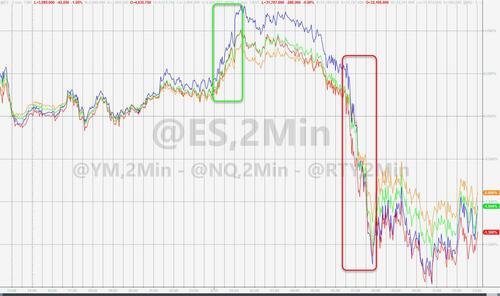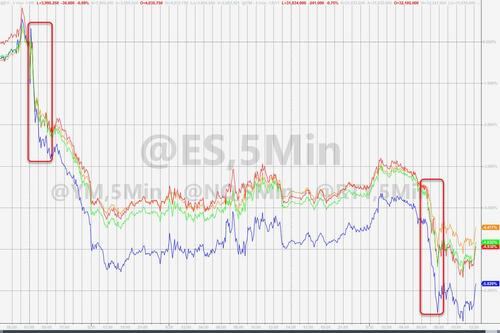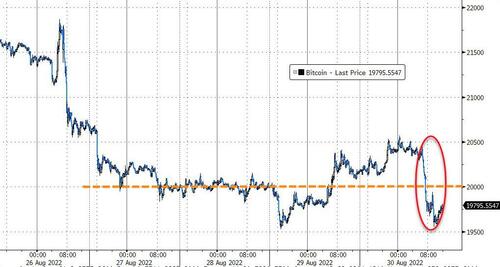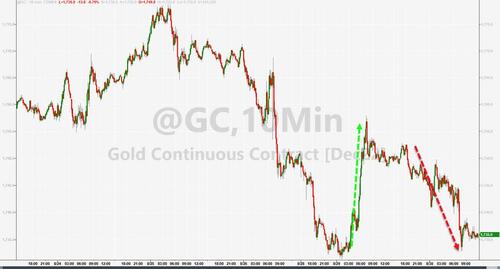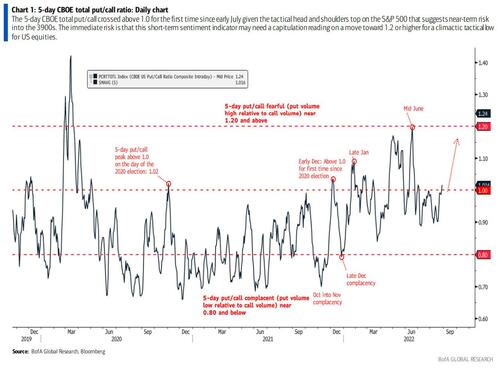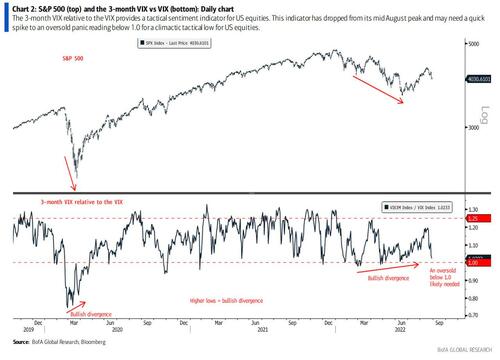Lee v. Yale Univ., decided today by Judge Sarah Merriam (D. Conn.), was brought by Dr. Bandy Lee, a volunteer (uncompensated) clinical professor in the Yale School of Medicine’s Law and Psychiatry Division. (This volunteer service required her to “participate in four hours of student-related, teaching, or supervisory activities per week. These activities could be satisfied through teaching a course, lectures, through advising students in connection with their thesis preparation, supervising residents, participating in seminars and grand rounds, engaging in scholarly activity, participating in department administration, and other activities.”) She was fired on Sept. 4, 2020 for the following reasons:
[T]he review committee … consider[ed] whether the Department could offer you a continuing teaching role …. The key question in our minds was whether you had the clinical judgment and professionalism to teach trainees key aspects of their profession. Your diagnostic impressions of President Trump and several other public figures and your recommendations for treating President Trump played a role in our discussion. This was not because of the political content of your speech. As you know, the Department and the University publicly defended your academic freedom and your right to express your opinions as a citizen. As detailed below, the Committee’s concern was what your diagnoses and treatment recommendations said about your clinical abilities and professionalism.
Since 2017, you have taken the position that you have a “duty to warn” the public that President Trump presents a threat to public safety. The duty to warn derives from the Tarasoff decision and subsequent legal developments, and it applies to clinicians in a treatment relationship with a potentially dangerous person. It has never been applied outside that context. In public comments, you said that President Trump was incapacitated by a psychiatric disorder, and you identified symptoms such as aggressive speech, sexual misconduct, incitement to violence, belief in conspiracies, declining cognitive functioning, and neurological deficits. Initially, you did not identify the disorder causing these supposed symptoms. In December 2019, you said publicly that President Trump exhibited a “pattern of delusions,” was “lacking rational decisionmaking capacity,” and had “definitive signs of severe pathology” that required “an advanced level of care.” In January 2020, you called for “an involuntary evaluation” of President Trump, and you said, “I am beginning to believe a mental health hold … will become inevitable.” That same month, you publicly suggested that President Trump, Rudolph Giuliani and Alan Dershowitz had a “shared psychosis.”
I want to emphasize that you did not make these statements as a layperson offering a political judgment; you made them explicitly in your professional capacity as a psychiatrist and on the basis of your psychiatric knowledge and judgment. For that reason, the committee decided it was appropriate to consider how these statements reflected your ability to teach trainees.
We began our discussion by asking you to address whether your diagnosis of President Trump and your treatment recommendations should have included a disclaimer regarding limited evidence, whether they adequately reflected the process of differential diagnosis, and whether you applied any recognized standards when you determined on the basis of his public statements that President Trump presented a danger to the public health. Your responses failed to address any of these points.
Our discussion then turned to your statement that President Trump and Mr. Dershowitz had a shared psychosis. You told us that “someone doesn’t have to be psychotic in order to have a psychosis;” that your observations had convinced you that the strong emotional bond between President Trump and his followers “is a group phenomenon of shared psychosis;” and that, in the presence of this bond, “the default is that you would expect a shared psychosis.” You further claimed that you were misquoted; that, in fact, you had said President Trump and Mr. Dershowitz “may” have a shared psychosis; and that you meant to say that they have a shared delusional disorder. We asked you to explain in detail the basis for this diagnosis, and none of the evidence you offered met the DSM-5 criteria for shared delusional disorder. The committee also noted that you explored no other explanations that might have accounted for the data that led you to your diagnosis.
Following our discussion with you, the committee considered whether the information that you shared with us was relevant to your capacity to teach trainees the core competencies required by the ACGME. We decided that our discussion with you implicated three of the six competencies: medical knowledge, interpersonal and communication skills, and professionalism.
In regard to medical knowledge, the ACGME requires trainees “to demonstrate knowledge about established and evolving biomedical, clinical, and cognate sciences and the application of this knowledge to patient care.” Our discussion of your diagnosis of shared psychosis or, as you preferred, shared delusional disorder convinced the committee that you do not adequately understand or choose not to follow current methods for diagnosing psychotic disorders, which are common in the psychiatric practice that our trainees will enter.
In regard to interpersonal communication skills, the ACGME requires trainees “to demonstrate interpersonal and communication skills that result in effective information exchange and teaming with patients, patients’ families, and professional associates.” In our lengthy discussion with you, you were unable to explain to four trained colleagues the basis of a very serious diagnosis. In addition, you have made many conflicting, confusing, and sometimes inaccurate public statements about psychiatric diagnosis and the profession’s duty to warn.
Finally, the ACGME requires trainees “to demonstrate a commitment to carrying out professional responsibilities, adherence to ethical principles, and sensitivity to a diverse patient population.” Although the committee does not doubt that you are acting on the basis of your personal moral code, your repeated violations of the APA’s Goldwater Rule and your inappropriate transfer of the duty to warn from the treatment setting to national politics raised significant doubts about your understanding of crucial ethical and legal principles in psychiatry.
In light of the above concerns, the Committee concluded that the Department should not seek a new teaching role for you. The Committee report was shared with the Executive Committee of the Department of Psychiatry and discussed at length. Its recommendation, that your teaching duties not be reinstated, was endorsed unanimously by the Executive Committee. In the absence of a formal teaching role, your voluntary appointment lapsed….
The court rejected Lee’s breach of contract claim, concluding that there was no “implied contract that Yale would not decline to reappoint plaintiff, regardless of whether it found that plaintiff was no longer qualified for the position, based at least in part on her public statements”:
Plaintiff fails to acknowledge, in arguing that she expected her appointment to be effectively automatically renewed, that the Faculty Handbook expressly provides: “The reappointment of persons holding term appointments is not automatic at Yale.” As noted elsewhere, plaintiff expressly relies on the Faculty Handbook where she believes it supports her claims, but disregards this express statement of the Faculty Handbook that undermines her claims….
[Yale’s] alleged generic expressions of “approval and appreciation” or commendation [for her past work] are insufficient to even suggest a promise of continued appointment, much less support a contractual commitment. Even if the Court were to treat these statements as “favorable performance evaluations” of plaintiff, such “isolated positive feedback” does not support a finding that Yale intended to guarantee plaintiff continued appointment….
Plaintiff’s vague assertion that some unspecified provision in the Faculty Handbook creates a right to “academic freedom” is plainly insufficient to show that defendant undertook a contractual commitment to guarantee plaintiff continued reappointment…. And [Yale’s] generalized statements of principles are not sufficient to manifest the intent to form a contract for guaranteed reappointment. The parties’ course of conduct, the statements made by Yale administrators, the Faculty Handbook, and Yale’s policy statements—taken individually or in combination—are, as a matter of law, insufficiently definite to create the contract that plaintiff seeks to enforce. Plaintiff has “pluck[ed] out of context” various statements indicating that she was previously successful in her role, and expressing that Yale values academic freedom. Plaintiff has failed, however, to point to any facts, “which if taken as true, would demonstrate Defendants’ intention to be contractually liable to Plaintiff” for declining to reappoint her regardless of whether it found that she was no longer qualified for the position….
This is especially true in light of the express disavowal, in at least two places in the Faculty Handbook, of any guarantee of reappointment. See Doc. #32-6 at 23 (“The reappointment of persons holding term appointments is not automatic at Yale.”); (“Faculty members on term appointments do not have a right to reappointment[.]”). It is not reasonable to believe that the other portions of the Faculty Handbook, a few stray supportive remarks, and a history of consistent reappointment somehow negates these express statements of intent by Yale.
And the court rejected plaintiff’s claim under the Connecticut private employee free speech statute, which provides,
Any employer … who subjects any employee to discipline or discharge on account of the exercise by such employee of rights guaranteed by the first amendment to the United States Constitution or section 3, 4 or 14 of article first of the Constitution of the state, provided such activity does not substantially or materially interfere with the employee’s bona fide job performance or the working relationship between the employee and the employer, shall be liable to such employee for damages caused by such discipline or discharge[.]
But a volunteer such as Lee, the court concluded, doesn’t count as an “employee” for purposes of the statute:
To adequately allege remuneration [so as to make someone an employee], a plaintiff must allege “either direct compensation, such as salary or wages, or indirect benefits that are not merely incidental to the activity performed.” … [S]uch indirect benefits include “health insurance, vacation, sick pay, a disability pension, survivors’ benefits, group life insurance, scholarships for dependents upon death, or other indirect but significant remuneration.”
Plaintiff concedes that she “did not receive traditional compensation” from Yale. Nevertheless, plaintiff contends that her “relationship with Defendant yielded substantial tangible and intangible benefits for both parties.” Plaintiff asserts that she “was given access to the university’s libraries, subscription-based research materials, office space, [and] the university’s facilities.” She also contends that she was “covered under the Defendant’s malpractice insurance” for “her forensic consultations.”
These alleged benefits supplied by Yale are insufficient to satisfy the remuneration test. “Unlike a salary, vacation, sick pay, or benefits such as health insurance, disability insurance, life insurance, death benefits, and retirement pension, all of which primarily benefit the employee independently of the employer, the benefits put forward by [plaintiff] … , were merely incidental to the administration of the [defendant’s] programs for the benefit of [Yale] at large.” …
Plaintiff further alleges that “[t]hrough her association with [Yale], she secured prestigious appointments with domestic and international organizations, received research grants based on her academic affiliation and developed and implemented programs within the Yale School of Medicine.” As a result of these grants and appointments, plaintiff alleges that “[a] majority of Dr. Lee’s income was derived from her faculty appointment, affiliation, and relationship with Yale.” Plaintiff does not allege, however, that this income was received from Yale. Absent such an allegation, plaintiff has alleged only that she received such grants and appointments because Yale provided her with the “vague benefit” of increased “name recognition[.]” Such a benefit is insufficient to satisfy the remuneration requirement. …
Finally, the court rejected some other claims, such as for negligent misrepresentation and “the implied covenant of good faith and fair dealing.”
Note that the result might well have been different for a paid professor: The Connecticut statute might then have applied, and it would be more likely (I expect) that the university’s contract with the professor (tenured or even pretenured but tenure-track) would indeed provide some protections for academic freedom.
The post Court Rejects Suit by Volunteer Yale Psych Professor Fired for Public Diagnosis of Trump and Alan Dershowitz appeared first on Reason.com.
from Latest https://ift.tt/Bv3ohGU
via IFTTT


